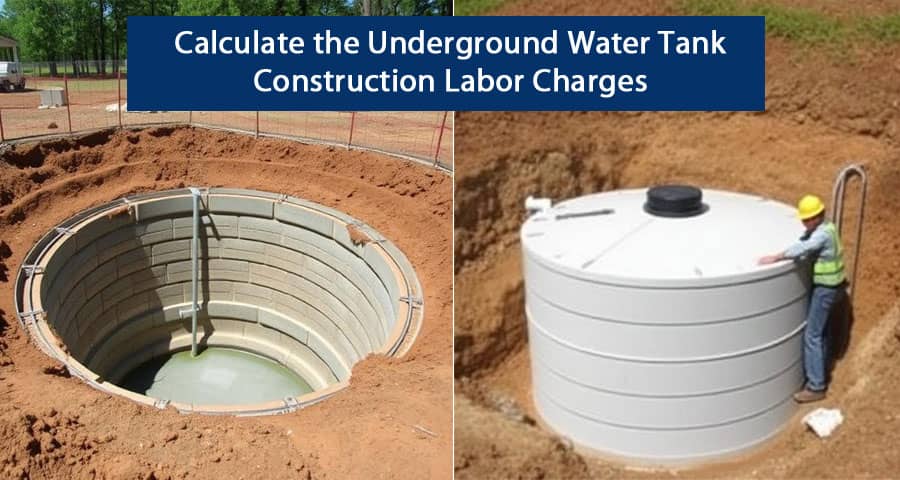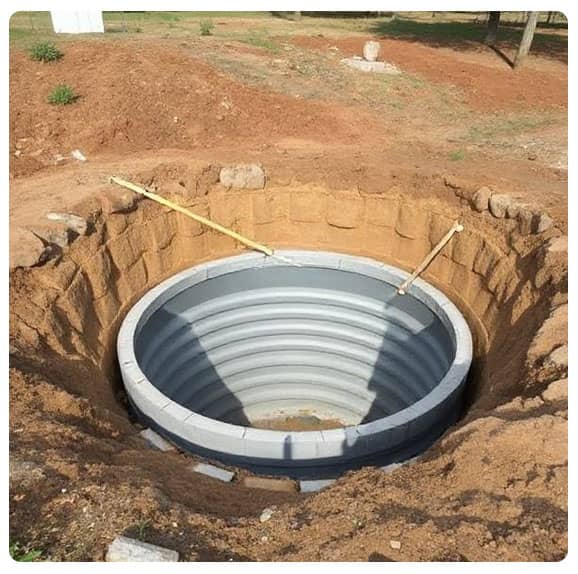How Do You Calculate the Underground Water Tank Construction Labor Charges?

When planning the construction of an underground water tank, it's critical to consider labor costs as a major portion of the total budget. Labor charges can vary depending on location, project size, depth of excavation, soil conditions, and local wage norms.
Understanding the Scope of Work Involved in Underground Water Tank Construction
Before diving into the calculation of labor costs, we must define the typical stages involved in building an underground water tank:
- Site clearing and layout marking
- Excavation and soil removal
- Compaction and base preparation
- Formwork and reinforcement
- Concrete work (base slab, walls, roof slab)
- Waterproofing and curing
- Backfilling and finishing
Each of these steps requires different labor skill levels, from unskilled to highly skilled laborers like steel fixers, masons, and concrete workers.
Breakdown of Labor Types and Their Daily Wages
To accurately estimate labor charges, it's essential to know the types of labor typically used and their approximate daily wages. Below is a general guide based on prevailing rates in urban and semi-urban areas:
| Labor Type | Role | Daily Wage (Approx.) |
|---|---|---|
| Unskilled Laborer | Earthwork, assisting tasks | $10 - $20 |
| Semi-skilled Laborer | Mixing concrete, minor masonry | $20 - $35 |
| Skilled Mason | Brickwork, plastering | $30 - $50 |
| Steel Fixer | Rebar cutting and tying | $30 - $45 |
| Carpenter | Formwork, shuttering | $35 - $55 |
| Supervisor/Foreman | Supervision and planning | $50 - $80 |
Labor charges will be calculated based on man-days (number of laborers x number of days worked) and adjusted according to site-specific complexity.
Step-by-Step Calculation of Labor Charges for Underground Tank Construction
Let's go through a detailed example of how to calculate labor costs for an underground water tank of 10,000 liters capacity (10m3).
1. Excavation and Earthwork
- Volume of Excavation: Assume 12m x 4m x 2m = 96 m3
- Productivity: 1 unskilled laborer can excavate approx. 2.5 m3 per day
- Labor Required: 96 / 2.5 = 38.4 ≈ 39 man-days
- Cost: 39 man-days x $15 (average wage) = $585
2. Base Preparation and Compaction
- Team Needed: 2 unskilled laborers for 2 days = 4 man-days
- Cost: 4 x $15 = $60
3. Reinforcement Work (Steel Fixing)
- Steel Weight Estimate: 100 kg/m3 x 10m3 = 1000 kg = 1 ton
- Work Rate: 1 steel fixer can place 100 kg/day
- Labor Required: 1000 / 100 = 10 man-days
- Cost: 10 x $40 = $400
4. Formwork (Shuttering)
- Surface Area: Assume 100 m2 of shuttering
- Work Rate: 1 carpenter covers ~10 m2/day
- Labor Required: 100 / 10 = 10 man-days
- Cost: 10 x $45 = $450

5. Concreting
- Total Volume: Assume 10m3
- Labor Needed: Team of 4 (2 semi-skilled + 2 unskilled) for 2 days = 8 man-days
- Cost: (2 x $30 + 2 x $15) x 2 days = $180
6. Masonry for Top Slab or Internal Partition (if any)
- Work Estimate: 10 m2
- Labor Needed: 1 skilled mason for 2 days = 2 man-days
- Cost: 2 x $40 = $80
7. Waterproofing and Finishing
- Waterproofing: 2 skilled workers for 2 days = 4 man-days x $35 = $140
- Backfilling and Finishing: 3 unskilled laborers x 2 days = 6 man-days x $15 = $90
8. Supervision Cost
- 1 Foreman/Supervisor: 10 working days x $60 = $600
| Work Description | Estimated Cost (USD) |
|---|---|
| Excavation | $585 |
| Base Preparation | $60 |
| Steel Fixing | $400 |
| Formwork | $450 |
| Concreting | $180 |
| Masonry | $80 |
| Waterproofing & Finishing | $230 |
| Supervision | $600 |
| Total Estimated Labor Cost | $2,585 |
Factors That Influence Labor Costs
Although we've given a clear breakdown, it's important to factor in variations that may affect labor charges, such as:
- Site accessibility: Difficult terrain may increase excavation time.
- Local labor rates: Urban vs. rural wage differences.
- Design complexity: Tanks with multiple chambers or curved walls require more skilled labor.
- Working hours: Night shifts or expedited deadlines raise wages.
- Seasonal factors: Rain or extreme heat can slow work and extend timelines.
Tips to Optimize Labor Charges
- Use experienced contractors with fixed-rate quotations.
- Bundle tasks to reduce idle time for laborers.
- Rent machinery for faster excavation (labor savings).
- Negotiate in bulk if building multiple tanks.
Labor Cost as Percentage of Total Construction
On average, labor costs account for 25% to 35% of the total underground tank construction cost. For a 10m3 tank with a full build cost of around $8,000 - $10,000, labor alone can be $2,500 - $3,500, depending on specifications and finish level.
Conclusion
Calculating underground water tank labor charges requires a precise understanding of each construction phase and the labor required for it. A structured approach as detailed above not only ensures accuracy but also provides transparency for project planning and cost control.
Proper estimation, skilled labor selection, and efficient supervision are the cornerstones of managing labor expenses efficiently during underground tank construction.
Please view the following short video for Calculate the Underground Water Tank Construction Labor Charges
